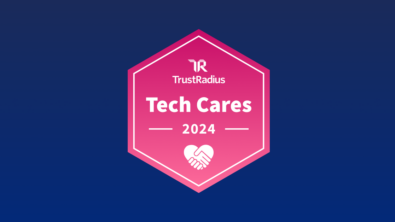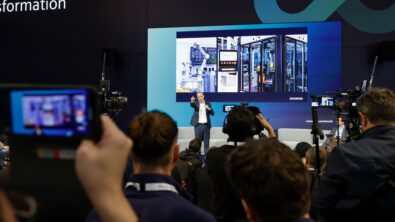BYOB (Build your own Bicycle)
 Unfortunately I am not on my way to COFES today. Even more unfortunately this makes the second year in a row that I won’t be there. It is one of the (un)conferences that I most look forward to each year, mainly due to the wide range of topics and the varied backgrounds and interests of the participants. Since I don’t get to go this year, I thought I would muse for a bit on some of the things that I would have talked about if I was there. Maybe someone who is attending COFES this year might see it and be inspired to bring a few of these ideas up. An even bigger maybe is that someone will come back to this blog and tell me what wisdom the group was able to pile on to these simple ideas. In looking at the abstracts for some of the talks from speakers like Chris De Neef and John Gage, I would be surprised if they don’t get awfully close to a few of these ideas. Then again, maybe I’m in left field picking daisies. Let’s see…
Unfortunately I am not on my way to COFES today. Even more unfortunately this makes the second year in a row that I won’t be there. It is one of the (un)conferences that I most look forward to each year, mainly due to the wide range of topics and the varied backgrounds and interests of the participants. Since I don’t get to go this year, I thought I would muse for a bit on some of the things that I would have talked about if I was there. Maybe someone who is attending COFES this year might see it and be inspired to bring a few of these ideas up. An even bigger maybe is that someone will come back to this blog and tell me what wisdom the group was able to pile on to these simple ideas. In looking at the abstracts for some of the talks from speakers like Chris De Neef and John Gage, I would be surprised if they don’t get awfully close to a few of these ideas. Then again, maybe I’m in left field picking daisies. Let’s see…
It’s been a while since I’ve taken a dip in the social production pool (so long ago it was on my personal blog since we hadn’t started one here yet), but now seemed a good time to take a dive and see what’s changed. As a refresher, social production is the emerging trend of end users (not just consumers) getting directly involved of the production of the products they want to use. This concept is now decades old in the software world, witness open source that started with simple routines then grew to operating systems, development environments, IT applications and even end user applications. The world of open source produces things of value through entirely or at least mostly through social means. Or as put by Yochai Benkler in The Wealth of Networks:
It (Peer Production) refers to production systems that depend on individual action that is self directed and decentralized, rather than hierarchically assigned
The question that I keep mulling over is can this idea scale to real things, like cars, consumer electronics…or bicycles? Can I, as a bicyclist, expect in the near future to be able to join with other like minded bicyclists, share our ideas, jointly develop concepts, agree on a design and then ride off into the sunset on our dream bike? I think the answer is a solid… MAYBE. There are some real challenges to be overcome. The issues and potential solutions as I see them:
- the legal issue: Who is responsible if there is a terrible design flaw in my bicycle that not only causes me but everyone else who builds one to have terrible injuries when riding it? Fortunately this issue was also faced by the open source software movement and it has been effectively addressed by large commercial providers testing, implementing and certifying certain products. This may be a future business model for today’s factory owners – do the final validation of a community developed product, then license produce and sell it back to the community who produced it. Of course that brings up the other side of the legal issue, Intellectual Property Ownership. Again, I think the social manufacturing community will benefit from the path already blazed by the open source software and social media community by leveraging things like creative commons.
- the capital issue: unlike tools to compile software which can be had for free or very low cost, factories are expensive. Even just a “simple” CNC is thousands of dollars. Even if my bike building consortium pools its resources, we will still be under water building our own bikes after the cost of the capital investment required to build our dream bikes is factored in along with the material and labor costs. The community / factory owner partnerships mentioned above may help to solve some of this, but I also think that the rapid progress in the area of 3D printing will also ease this issue. Once reserved for small specialty companies and home builders who wanted to make game pieces, 3D printing took a major step forward almost a year ago when HP entered the market. When I was at Hannover Fair last week I saw for the first time 3D printers on the show floor. And not just one, but several. I expect their appearance at major manufacturing shows to only increase while their prices only decrease. Don’t wrinkle your nose – remember, the offset printing was the only game in town until laser printers arrived on the scene. Once you could pick up a laser printer for under $1,000 it was game over for all but the most special printing needs (annual reports).
- the standards issue: imagine I could assemble a group of bicycle designer wannabe’s – how would we work together? In the open source world their is a clear standard for documenting your ideas – the code. Admittedly there are many languages to code in, but once a standard is set for a project everyone can get on with it – may the best hacker win! I suppose our BBC (bicycle building consortium) could take the same approach and just pick a standard for requirements, geometry, simulation, etc. at the beginning of our project and stick with it. But what if we had started work before we had self assembled as a team in different tools, using different formats? The potential solution here is not another standards war. Rather it lies in the emerging trends of direct modeling and in applying semantic concepts to manufacturing data. As direct modeling becomes more widespread, its far easier for me to work with my fellow bicycle designers to be without having to tote around all the CAD system specific history data. As semantic technology is applied to the data we share we can let the tools figure out what’s related and not worry about everything being in the same format in order to make decisions about what stays in our final design and what goes.
Another encouraging sign since the last time I swam in the social production waters is that more start-ups are trying out the ideas. I was really excited when I first heard about Etsy, since it was one of the first companies to make the switch from social production of information products to social production of physical products. Taking that one step further is a company I just heard about a month ago, Quirky. Going beyond the fashion accessories and artwork available on Etsy, Quirky offers products that require a little more engineering and manufacturing.
Also, encouraging, other providers are getting into the game of “Social PLM”. This messaging makes sense in terms of where they are coming from (they – and we – afterall are PLM providers), but I think shortsells the potential. “Social PLM” (and sub-segments like “Social Collaboration”, etc) make it sound like social is just another new tool thrown into the PLM toolbox. While its certainly possible for companies to see value in operating more socially within their four walls, the real value will come when the business model changes and they bring customers directly into all stages of their product lifecycle process.
If manufacturers can move to a model that will let “consumers and engineers party together” (thanks to Dave Winer for his original thought of “users and developers partying together”) manufacturers will see the true value a social enterprise will bring, both for them and their customers. There will be interaction at all stages of the product life cycle not just between engineers, manufacturers and suppliers, but the end customers. Even more, social production will not just about how the products get made, but how they get used. There will be social features in the products themselves that provide support, help customers suggest features, and let the user market the products to their networks. You can already see glimpses of what will make that possible in the mobile PLM product on iPad we launched last week at Hannover Fair.
The potential for social concepts to shape the future of manufacturing and the products we all use really can’t be understated. Now that feels like a COFES level thought!
Hope everyone enjoys Arizona. I will be thinking of you (but more so of this) and I will be watching what goes on from afar. I’ve already marked my calendar for next year and if things keep on going, maybe I’ll bring my very own bike.
PS – one thing I do get to attend this year in our user group, PLM Connection in Las Vegas. If any of this sparks an interest and you will be there too, then sign up for a workshop that I will be in on Wednesday, May 4th focusing on just these ideas.


